| (The Former) Jakarta Field Station of the Max Planck Institute for Evolutionary Anthropology | |
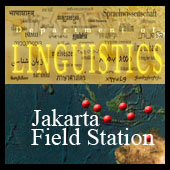 | |
| Data | |
| Projects | |
| Language Acquisition | |
| Bilingual Language Acquisition | |
| Language Contact | |
| Language Description | |
| Language Experiments | |
| Javanese Dialectology | |
| Metaphor and Emotion | |
| Collaborative Projects | |
| Documentation of Kenyah | |
| Figurative Language | |
| Language and Thought | |
| Phon. of Jakarta Indonesian | |
| Traditional Jambi Malay | |
| Moluccan [external link] | |
| Acquisition of Passive Voice | |
| Sociolinguistic Questionnaire | |
| Former Collaborative Projects | |
| Acq. of Morpho-phonology | |
| Publications & Conf. Papers | |
| News | |
| Regular Events | |
| Events | |
| The Jakarta Forum | |
| Contact Us | |
| People | |
| Site Map | |
| Links | |
| Impressum | |
Language and Thought - Experiments
The cognition project began in 2003. The scope of work is laid out by Lera Boroditsky of Stanford University (previously of MIT). The underlying theory that serves as the basis for this project is the relationship between language and thought. Abstract domains, especially of time, is the focus in many of our experiments so far. Language not only reflects these domains, but also shapes their representation.
LATTE (Language Aspect Tense Test)
Subjects are shown three pictures, each depicting a succession of action.
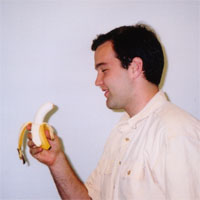


Afterwards, subjects are presented with random pictures, where they are asked to write a sentence describing the picture. The target of this experiment is to investigate the use of tense in Indonesian language, which correlates to Indonesians' conception of time.
TripleLATTE
 | |
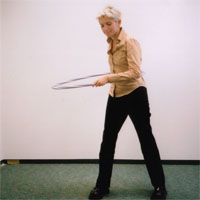 |  |
The target of this experiment is to investigate the conception of time in early childhood development.
LIME
Does the way we talk about time influence the way we think about it? Some languages express time in terms of distance, while others in terms of quantity. Previous study in the cognition lab showed that English speakers tend to look at time as if time moves in a horizontal line, while Mandarin speakers look at time as if it moves vertically. Whereas English speakers say June is the next month, Mandarin speakers say June is the down month (xia ge yue).
This experiment intends to investigate Indonesians' spatial language and temporal thinking.
a. Growing lines
Subjects are presented with lines ‘growing' horizontally across monitor one pixel at a time. They are then asked to estimate either the duration or the length (displacement) of each line by clicking the mouse to indicate the beginning and end of the estimated temporal or spatial interval. In addition to horizontal lines, subjects are also presented with vertical lines.

b. Filling tanks
Subjects view schematically drawn containers on the monitor being filled vertically, one row of pixels at a time. Subjects are to imagine the container as a tank being filled with water. They are then asked to estimate either the amount of time it took to fill the tank or the amount of water in the tank at the end of the trial, using mouse clicks.

(courtesy of Boroditsky, L. and Casasanto, D., 2001)
SOSIS
Subjects are shown three pictures of one event. They are asked to describe in one short sentence each picture. The sentences are then analysed for segmental features.

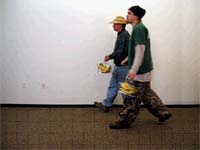
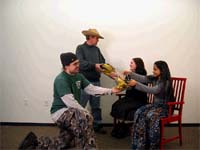
TEA
Subjects are shown a number of objects, such as ball, book, blouse, pen, etc. Then the objects reappear beside a stick figure, either male or female.
After each picture is shown, subjects are asked whether the object appeared with a girl or a boy, and whether the object was on the left or the right side of the screen (the center being the stick figure). The objective of this experiment is to investigate the gender assignment in Indonesian speakers as well as horizontal orientation (right/left).
BlameGame
BlameGame is our most recent project. This project is designed by Caitlin Fausey, Lera Boroditsky's student. This experiment proposes that the degree of ‘blame' factor in the language defines the thought process of the people who speak the language. In this experiment, subjects are shown random short videos of mishaps as well as intended actions. Then they are asked to provide a short explanation on the short videos they have just seen. The short description reflects Indonesians' perspective on subject-object correlation.
Last modified: 10 Apr 2007, London, UK
Location: cog_experiments.php.html